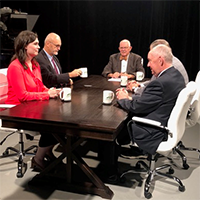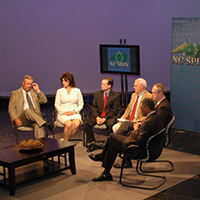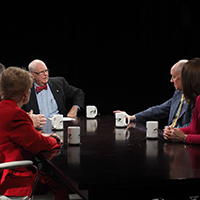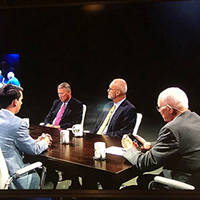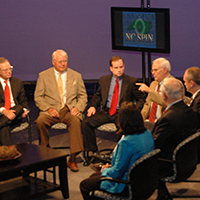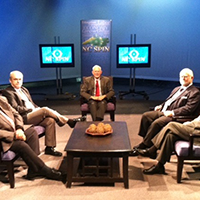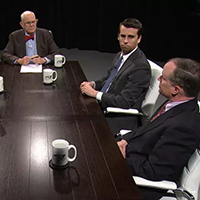Can we have it all?
Published 3:47 p.m. Thursday
After earlier jobs in the private sector (furniture) and the government sector (local and federal), I found my ultimate career in teaching. As I look back, I had a fabulous 43-year career at North Carolina State University teaching economics to students and to the public through the University’s extension – also called outreach – programs.
One of the aspects of economics I stressed was the implications the subject has for numerous everyday decisions. Most people think of economics as a discipline applying only to business decisions or financial decisions such as investing and borrowing. As a result, if an individual is not interested in business or finance, their reaction to economics is summarized in one word – “boring.”
In my teaching career I sought to overcome this interpretation of economics. While I certainly taught how economics can help businesses be successful and guide individuals in a variety of financial issues, I also emphasized how broad economics is as a useful tool for numerous life decisions.
“How so,” you might ask? Well, believe it or not, economics can be very helpful in answering the question posed by this column - “can we have it all?”
The major reason economics exists as an educational field is the realization there are numerous uses for resources. Indeed, the word economics is derived from the Greek word “oikonomia,”referring to decisions made by managers of farms and estates over how to best use resources to achieve the best outcome. For example, managers had to decide how to use manual and non-manual resources, including land, in growing alternative crops to achieve the highest financial returns. Economics (oikonomia) reminded the managers that if they used twenty workers and fifty acres to grow wheat, they couldn’t use that same fifty acres and the time used by the twenty workers to grow corn. Therefore, economics motivated the farm managers to always consider the resource costs and sales benefits of raising either wheat or corn, and choose the one that gave them the largest net gain of returns over costs.
I used this classic example of the importance of economics to the thousands of classes I taught in my career, and I would often see the faces of disinterest among many students. Hence, I was quick to follow-up with more personal examples.
My favorite example used home-buying, something that college students in their late teens or early 20s had likely thought about after living in cramped dorms or apartments. Most homebuyers want at least two characteristics in a home – adequate space and proximity to work, shopping, and entertainment.
But even a casual look at any homebuying market shows a problem with having both square footage and proximity. It will cost the homebuyer much more. This is because most homebuyers want these two characteristics, so there will be many bids for larger homes in convenient neighborhoods. And where there are more bids, the price goes up. Hence, “having it all” in the real estate market means paying more.
Does this mean that richer homebuyers who can afford the “having it all” home don’t face the economic problem of the Greek farm manager of carefully considering how to use resources? Yes they still do. Lets’ say the “have it all” house would cost the buyer $50,000 more. There are numerous ways that $50,000 could be used, such as for a college fund for children, for a new vehicle, in a retirement investment, or as a contribution to a charitable institution or cause. There are always alternative ways resources can be used, even for rich people.
Don’t forget that time is also an important human resource. Actually, time may be a more significant resource than money because time is limited, whereas money can be earned and expanded. Students constantly face decisions about time use. Does a student use two hours to study, go to the “big game,” work an extra shift, or catch up on sleep? The student can’t do them all.
Perhaps one of the most difficult time management issues today is that of a parent – often the mother – deciding whether to use time to work and earn money, or using that same time for child-rearing, especially when the child is very young.
Economists have a term indicating the reality that using a resource creates both benefits and costs. The term is “opportunity cost.” It simply means while using a resource in one way provides benefits, it also has the costs of the lost benefits from using the resource in another way.
Investors, in particular, understand opportunity cost. Say you have the option of investing in stock A or in stock B for a year. You pick stock A, and therefore earn the returns from owning stock A for a year. The opportunity cost is you don’t earn the returns from owning stock B for a year. If stock A earns more than stock B, then your opportunity cost is less than the earnings from stock A, and you’re happy. But if Stock B earns more than stock A, then you lose because the opportunity cost of not owning stock B is greater than the benefit from owning stock A. One way of dealing with opportunity costs in investing is diversifying, which in the example simply means splitting the investment between stock A and stock B.
What is the best way of dealing with the reality of opportunity cost and “not having it all”? Economics suggests the answer is study, analysis, and comparison of benefits and costs of alternative resource uses. Should we thank the ancient Greeks for these insights? You decide.
Walden is a Reynolds Distinguished Professor Emeritus at North Carolina State University.

